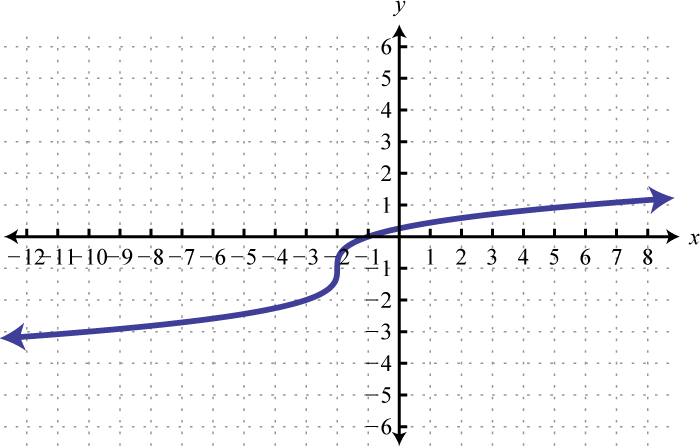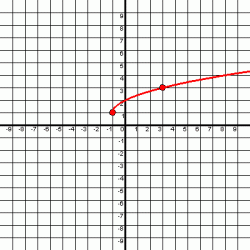this parent function's graph looks like a "V"
What is absolute value
f(x) +2
What is translated up 2

What is cuberoot(x+2) -1
What is the average rate of change for the function f(x)= 2x+1 from the interval of -5 to 2
What is 2
Quadratic function moved up 7 units
What is f(x) = x^2 + 7
this parent function's graph is "U" shaped
What is Quadratic
f(x) = (x + 7)
What is translated left 7

What is f(x)= -(x+2)²+4
What is the average rate of change for the function of f(x)= sqrt(x-1) on the interval of 2 to 5?
What is 1/3
Square root moved left 18 units and flipped over the x axis
What is f(x) = -sqrt(x + 18)
What is square root function
f(x) = 2x^2
What is vertical stretch by 2

What is f(x) = |x - 3| - 2
If f(x)= 3x-2 and g(x)= 2x+5, what is f(x) * g(x)?
What is the domain of this graph?
What is 6x2-11x-10 and all real numbers
Absolute value moved left 2 units and down 35 units
f(x) = lx+2l -35
This parent function's graph looks like a diagonal line
What is Linear
f(x)= -√(x+6)+3
What is reflected across the x-axis and translated left 6 and up 3

What is h(x)=√(x−1)+2
What is the domain and range of the function f(x)= sqrt(x+3) -2
What is domain [-3, infinity) and range [-2, infinity)
Quadratic compressed vertically by 1/2 and flipped over the x axis, then translated up 1
What is f(x) = -1/2x^2 + 1
Is a root function but has a domain of all real numbers
What is cube root function
f(3x)-2
What is horizontally compressed by 1/3 and translated down 2

What is f(x)=√ (x+1)+1
What is the domain and range of the function
f(x)= -2(x-4)2 + 3?
What is domain all real numbers and range [3,negative infinity)
Cube root function stretched horizontally by 2 and flipped over the y axis
What is f(x) = cuberoot(-1/2x)